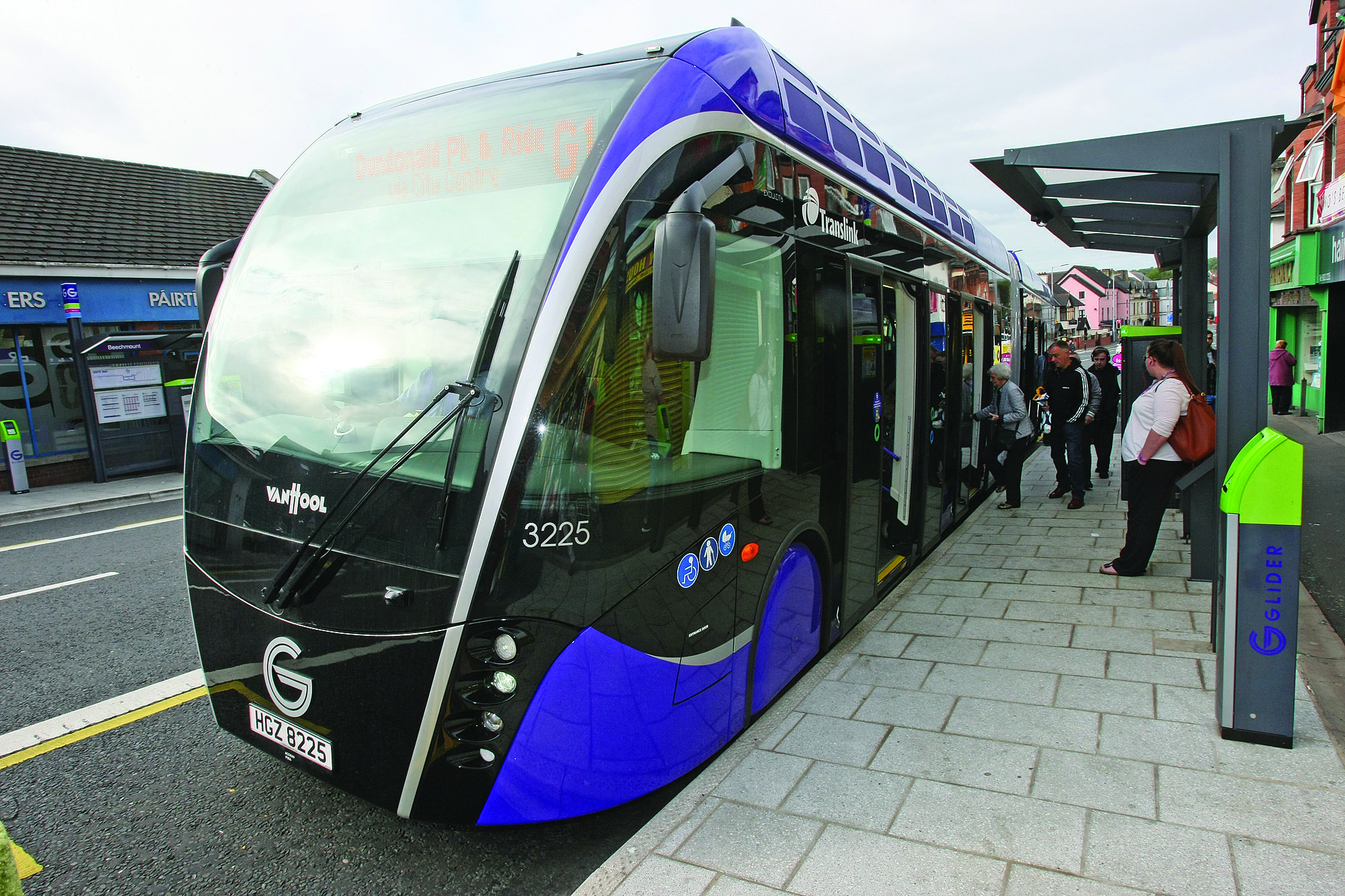TRANSLINK has a big Glider problem that it needs to sort out as a matter of urgency. To be more precise, Translink has a big West Belfast Glider problem that it needs to sort out as a matter of urgency if it wants to stop a success story turning into a failure.
Since its first paying passenger in 2018, the East-West rapid transit system has proved a hit with the public. So much so that it has all but finished the city’s legendary black taxi business that was for decades part of the DNA of West Belfast.
The Glider is, in many ways, a triumph of spin over substance. It’s built to look like a modern tram, with click-on panels covering its metal and rubber wheels; but it’s essentially a bus. A hybrid bus, but a bus nevertheless. And while it was sold as a ‘rapid’ solution to the city’s transport challenges, there’s nothing particularly fast about it. It makes the journey from the Stewartstown Road to the city centre, and from the city centre to Dundonald, at exactly the same pace as a Translink bus. Its main advantage in terms of speed and time is exactly the same advantage possessed by the rest of the Translink fleet – its unique access to the (mostly) clear bus lane.
But the people have spoken. We are currently in the summer holiday quiet period, but when the swimsuits and suntan lotion are put away and the schools return, rush-hour passengers will again queue up to be sardine-canned into the bendy purple roadtrains that have in seven years become as familiar a part of the West Belfast roads system as the black hacks once were.
There can be no conversation about the Glider in West Belfast that does not prioritise the crime and anti-social behaviour that the Glider has brought with it and on which today this newspaper is once again reporting. We do not say that Translink is to blame for the actions of the mostly young passengers and schoolchildren responsible for the depressingly long list of incidents that have taken place on the Glider. But we do say that it has a duty to its passengers to protect them from harm and distress. It is falling down on that duty.
With no empirical evidence to be guided by, we can only go by the anecdotal (but substantial) evidence of our own reporting and point out that the Glider problems are overwhelmingly caused by young people. And since there are considerably more young people in the West of the city than in the East, then it is perhaps not surprising that this section of the route is more problematic. That said, the difference should not be this stark.
While the problem is multi-faceted, we would as an opening gambit in this conversation point to a particular issue. Groups of youngsters view the Glider as a mobile recreational facility. That’s hardly surprising given the total absence of contact with Translink staff at the point of ticket purchase. The two-person inspector teams are viewed not as a deterrent, but as as an entertaining challenge.
Staff-free ticketing is of course a key part of the Glider business model, and while it saves the company money, its passengers are paying a price.
A review of that system is essential.






